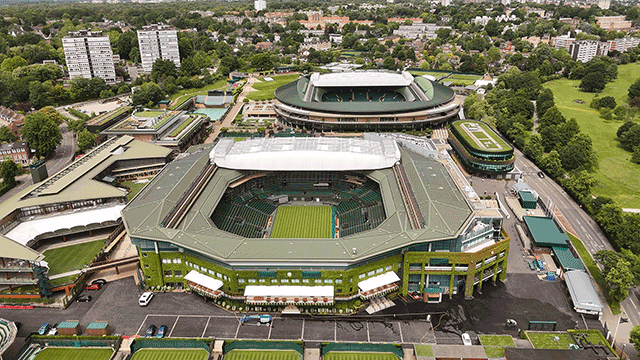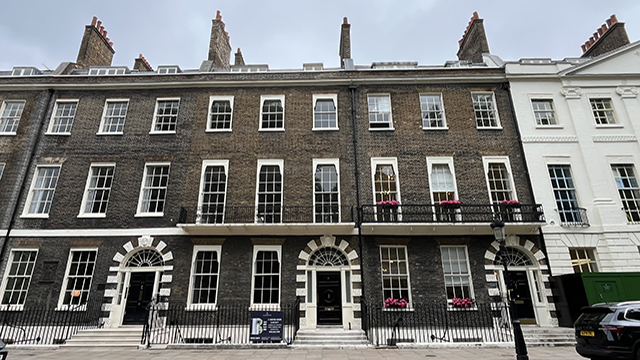The owner of independent hardware store H Glickman in Tottenham, north London, says he is one of the more fortunate retailers in the area.
Derek Lewis was having a weekend break in Bournemouth when rioting broke out on 6 August, so his first hint of trouble was when the mobile phone connected to the store’s burglar alarm went off shortly after midnight.
“I drove straight back to London, and nothing could have prepared me for the carnage and property damage I arrived to find,” he says.
The store had been ransacked: grilles destroyed, windows smashed in, paint strewn everywhere, hammers and pickaxes stolen. “This is gong to cost us thousands of pounds, and that’s only the cosmetic costs. We also have to consider lost trading time and clean-up costs.”
But other landlords and retailers on Tottenham’s High Road face even worse.
“I know some stores on the road that were so badly damaged by fire that I don’t see them wanting to start again, and I can’t see anybody wanting to step in and replace them,” Lewis says.
After the fires, Haringey council identified five Tottenham buildings as suffering “serious structural damage”: the listed 1930s Carpetright store; the Aldi supermarket and Fitness First building; William Hill; the three-storey 662 High Road; and the listed Georgian buildings at 530-536 High Road.
Cost of demolition
According to the council, the cost of demolition and repairs to buildings in the borough could be near £10m.
The costs to landlords, occupiers and local authorities have spiralled, after the vandalism and looting spread across the capital – first to nearby Wood Green and Enfield, then south to Brixton, Clapham Junction and Croydon, and on to Birmingham, Nottingham, Manchester, Bristol and Liverpool.
The Association of British Insurers initially estimated that riot damage could cost more than £100m, but this figure was doubled when prime minister David Cameron put the cost at £200m.
Most of the costs will be met by the owners and occupiers of buildings targeted by the rioters. JD Sports, to take just one example, says its final bill for property damage and stolen goods is likely to top £10m.
Catherine Patterson, associate at Norton Rose’s real estate litigation team, says landlords will be mostly responsible for making damage claims, but adds that some tenants will have their own policies to cover damage such as broken plate glass.
She says: “There will be pressure on landlords to claim for damage costs in order to abide by leasing agreements and insurance policies.”
Serious damage
For a retail sector already struggling with poor trading conditions, the additional costs could cause serious damage.
“Retail landlords needed these riots like a hole in the head,” says a spokesman for the British Independent Retailers Association. “Consumer spending is falling, confidence was already on the way down and the pressure was on both turnover and bank balances. This has put pressure on retailers: some report paying suppliers more slowly in order to pay the rent and they are arguing strongly for rents to be payable on a monthly basis.”
Government pledges to set up a £10m recovery scheme for councils to make buildings safe and a £20m fund to help restore damaged high streets, have been welcomed by the retail and real estate sectors. In addition, affected businesses and homeowners can seek compensation under the Riots Damages Act 1886, even if they are uninsured. The time for applying for compensation has been increased from the existing 14 days to 42, and there are also promises to speed up and simplify the process for getting planning permission for fixing damaged properties.
But while the industry is appreciative of any help, there are concerns that the lasting effect of the riots will be to leave some areas as investment black spots.
“Insurers will pick up the tab for the riots, but it is lost trading time and the clean-up that may persuade certain tenants and landlords to pull out of an area,” says Peter Doyle, a partner at insurer Jardine Lloyd Thompson.
“You have to question whether big retailers are going to move into an area that was already on the fringe, but has now earned a reputation for being vulnerable to attacks,” says David Campbell, managing director of Alumno Developments, a student housing specialist with schemes close to riot-affected Peckham and the Walworth Road, between Elephant and Castle and Camberwell. However, both Doyle and Campbell stress how rare riots are and say they are unlikely to be a deciding factor in investment decisions.
Wider effect
As for the wider effect on the property sector, British Property Federation chief executive Liz Peace says it is important not to listen to “apocalyptic voices”. “The sort of assets that attract large-scale and overseas investment in commercial property are definitely still standing and are largely unaffected,” she says.
“Moreover, while it is still early days, we would hope that the property industry’s ability and appetite for delivering sustainable development in UK towns and cities will remain strong,” she adds.
“Some investors will have reservations but, on the whole, the capital is still a strong, attractive and safe haven for the market,” says John Whitfield, partner in the real estate team at law firm Taylor Wessing.
The worst riot-damaged areas will take weeks, if not months, to repair. But many people talk of plans for a quick return to trading and some are already back in business. They also speak of positive conversations with police and insurers.
In Birmingham, Gary Cardin, chairman of the Colmore District BID, says a feeling of normality has returned to Birmingham this week and “that investors talking of interest ahead of the riots, are still interested in the city post riots”.
In Manchester, meanwhile, commercial property company Bruntwood says the bulk of affected stores in its portfolio and elsewhere were trading the day after the city was hit. “In a spirit of ‘keep calm and carry on’, the Starbucks at the base of City Tower set up a temporary serving area on the pavement to serve customers on their way to work,” says Richard Burgess, head of facilities management at Bruntwood.
In a letter to David Cameron, British Retail Consortium director general Stephen Robertson wrote: “We stand ready to work with the government on these matters in order to make Britain’s high streets great places for retail once more.”
While some independents may never recover, that mood of resilience is also evident on Tottenham High Road, where Derek Lewis and others are picking up the pieces.
Architecture school graduates Lee Wilshire and Nick Varey have launched a scheme called Riot Rebuild to gather volunteer architects, interior designers and builders to help the owners of properties that have been destroyed.
The duo have asked riot victims to post their property repair requirements online at www.riotrebuild.co.uk and hope that professionals will respond with offers of help.
Respondents offering to help so far include MyBuilder.com, architect Blue Barnacles and JR Building Consultants.
The devastation caused by the riots prompted Estates Gazette to launch its Building a Better Britain campaign last week.
Working with UK Regeneration, an organisation we have supported since its formation last year, we are bringing forward our plans to convene a regeneration commission, consisting of representatives from the public and private sectors.
The commission, steered by EG and UKR, will be tasked with creating a blueprint for regeneration and urban renewal. Contribute via www.estatesgazette.com/building-a-better-britain.
Riot Rebuild offers help to landlords
Architecture school graduates Lee Wilshire and Nick Varey have launched a scheme called Riot Rebuild to gather volunteer architects, interior designers and builders to help the owners of properties that have been destroyed.
The duo have asked riot victims to post their property repair requirements online at www.riotrebuild.co.uk and hope that professionals will respond with offers of help.
Respondents offering to help so far include MyBuilder.com, architect Blue Barnacles and JR Building Consultants.











